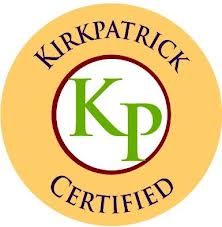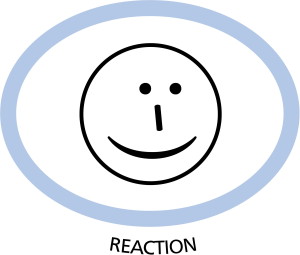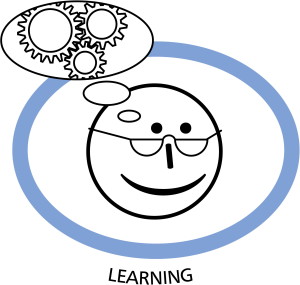The Kirkpatrick evaluation model
Training evaluation is vital in understanding if the training was successful, for everyone involved: the trainer, the organisation (or decision-makers) and the learner. There are many different ways to assess training and, more importantly, what has been learned. The Kirkpatrick Model is probably the best known model for analyzing and evaluating the results of training and educational programs. The four levels of the model take into account any style of training to evaluate learning.

Putting the Kirkpatrick Four Levels™ into practice
Cooperating closely with line managers and training departments, we have found that an adaptation of Kirkpatrick’s proven techniques can provide a chain of evidence showing how much training contributes directly towards business goals. Together we look to answer the following key questions:

Level 1
Reaction
- Were the learners engaged and motivated?
- Did they find the training relevant?

Level 2
Learning
- What knowledge, skills and attitudes do your staff need?
- How can we best demonstrate that learning has occurred?

Level 3
Behaviour
- What behaviors and drivers will achieve these results?
- Where can we see that learning is transferred to the job?

Level 4
Results
- What impact will the improved performance have on your business ?
- How can we measure this?
Demonstrating the value of training
Too often, soft skills are seen as “too soft” to be evaluated and language training is seen as too low a priority to go beyond “happy sheets” and level tests. We believe this needs to be challenged. So, how do we show that language and soft skills training has contributed to business success?
Building training partnerships
We strongly believe that the answer lies in the Kirkpatrick Four Levels™. Cooperating closely with line managers and training departments, we have found that an adaptation of Kirkpatrick’s proven techniques can provide a chain of evidence showing how much training contributes directly towards business goals.
“Distributing feedback forms at the end of a training program is an essential first step in the assessment process – but only a first step. The knowledge that the results of training will be assessed brings a more critical focus to the entire learning process – from target setting to program design and from preparation to execution. As Tom Peters said it: what gets measured gets done.”
Chris Slattery
Contact us for more information
Let’s talk training solutions!
Are you responsible for organizing training and development solutions for individuals, teams, or your entire organization? Are you looking for ideas and options? Would you like to learn about what works, what doesn’t, what others are doing, and where to start? We have 25+ years’ experience in implementing B2B training solutions. Projects large and small, we’ve done it all, helping hundreds of organizations and thousands of employees succeed globally.




